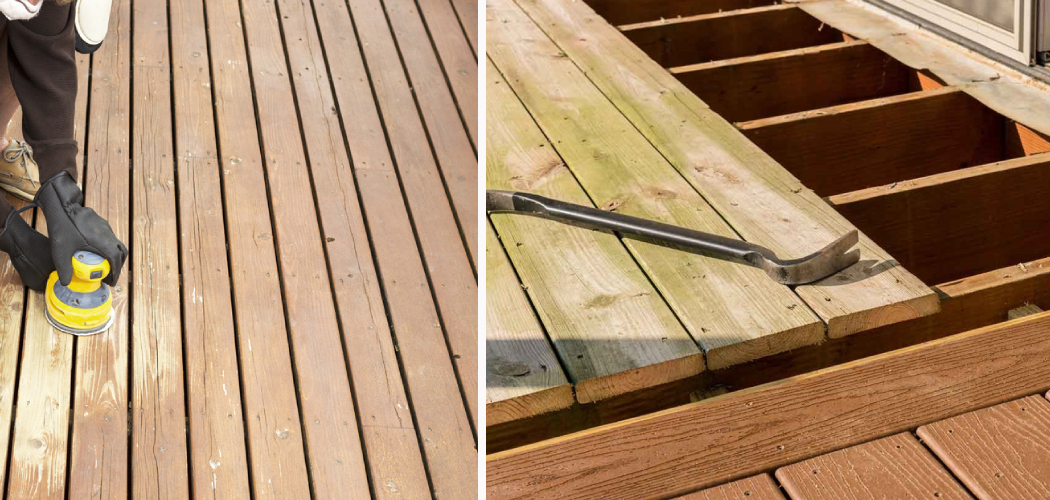The porch, often a focal point of a home’s exterior, is subject to constant exposure to the elements, foot traffic, and wear over time. As a result, porch floors may require occasional repairs to maintain both aesthetic appeal and structural integrity. Knowing how to repair a porch floor is a valuable skill for homeowners seeking to extend the life of their outdoor space.
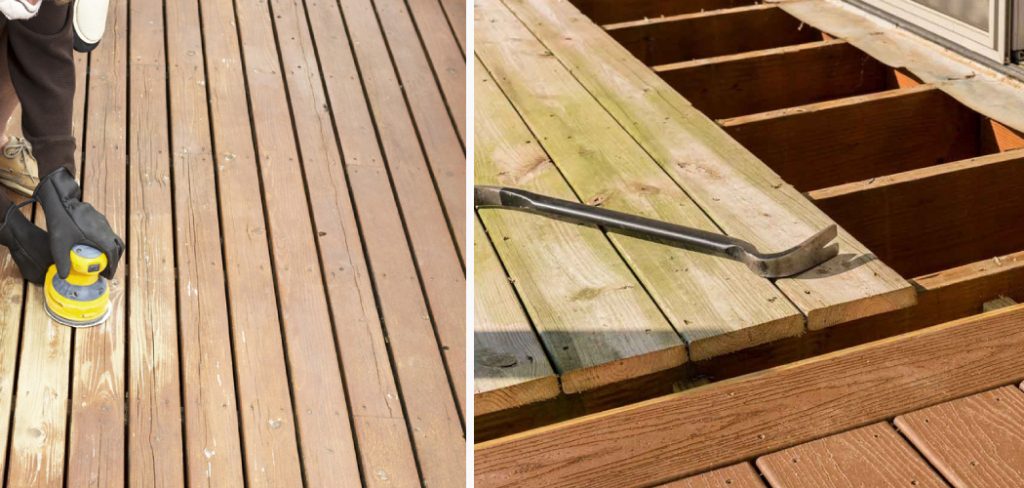
This article will explore practical steps and considerations involved in the restoration process, from identifying common issues like rot or damage to selecting suitable materials and executing effective repairs. Whether your porch floor is made of wood, composite, or another material, understanding the nuances of restoration ensures a welcoming and resilient outdoor space that withstands the test of time and weather.
Significance of Maintaining a Well-Maintained Porch Floor
The porch is an integral part of any house. It not only serves as the entryway to your home, but it also adds to the overall aesthetic and curb appeal of your property. However, due to its exposure to outside elements, it is prone to wear and tear. One of the most common issues faced by homeowners is a damaged or deteriorating porch floor.
A damaged porch floor not only looks unsightly but can also be a safety hazard. It can cause trips and falls, especially for young children or elderly individuals. Moreover, if left unattended, it could lead to further damage to the structure of your porch and potentially even your house.
Hence, maintaining a well-maintained porch floor is essential not only for the appearance of your home but also for the safety and integrity of your property.
Regular maintenance and timely repairs can help extend the lifespan of your porch floor and save you from costly replacements in the future. It also helps preserve the value of your home, as a well-maintained porch adds to its overall charm and appeal.
Furthermore, a well-maintained porch floor can also prevent potential health hazards. A damaged floor can become a breeding ground for mold and mildew, which can cause respiratory issues and allergies. By regularly cleaning and repairing your porch floor, you can prevent these health risks.
In conclusion, maintaining a well-maintained porch floor is crucial for the safety, appearance, and value of your home. It not only enhances the overall look of your property but also ensures the well-being of your family. With proper care and maintenance, you can enjoy a beautiful and safe porch for years to come. So, it is important to regularly inspect and address any issues with your porch floor to keep it in excellent condition.
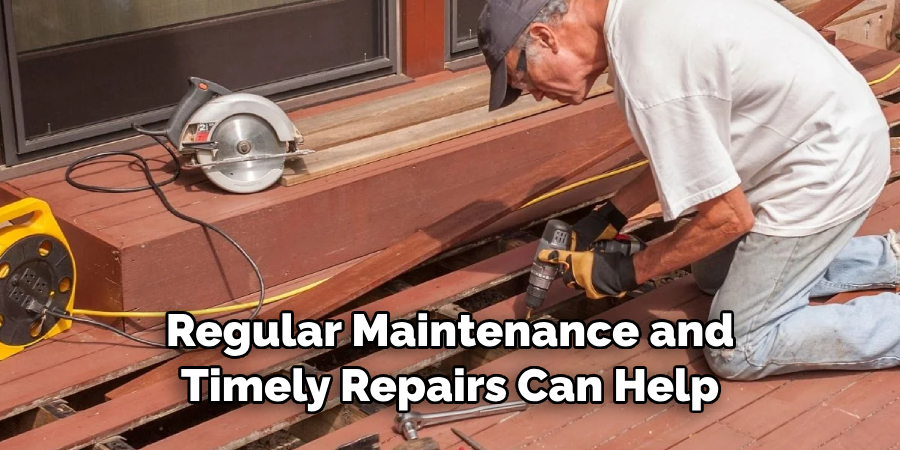
10 Methods How to Repair a Porch Floor
1. Replace Damaged Boards
The first step in repairing a porch floor is to replace any damaged boards. This can be done with a hammer, nails, and wood glue. Start by removing the damaged board and then cut a new one to fit the space. Secure it in place with nails and wood glue, and then sand it down for a smooth finish.
2. Sand Down the Floor
Once the damaged boards have been replaced, you’ll need to sand down the entire floor to remove any rough spots or splinters. Use an orbital sander for best results, but you can also use a hand sander if you don’t have access to an orbital sander. Be sure to wear safety glasses and dust mask while sanding to protect your eyes and lungs from debris.
3. Apply Primer
Once you’ve finished sanding, it’s time to apply primer to the porch floor. Primer helps protect the wood from moisture and will help ensure that your paint job lasts longer. Use a brush or roller to apply an even coat of primer, making sure that all gaps between boards are filled in as well. Allow the primer to dry completely before moving on.
4. Paint or Stain the Floor
Once the primer has dried, it’s time to paint or stain your porch floor. If you’re using paint, make sure that it is designed for outdoor use so that it won’t peel off over time due to exposure to rain or snow. For staining, choose a color that complements your home’s exterior color scheme for best results.
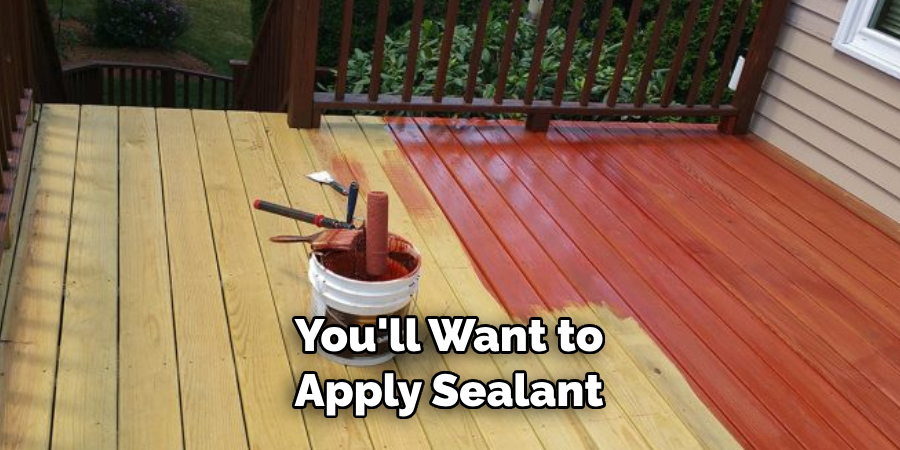
5. Sealant
After painting or staining your porch floor, you’ll want to apply sealant in order to protect it from further damage from moisture and sunlight exposure over time. Choose an outdoor-grade sealant for best results, and make sure that all gaps between boards are filled in as well before applying two coats of sealant with a brush or roller for maximum protection against moisture damage over time.
6. Replace Loose Nails
If there are any loose nails on your porch floor, they should be removed immediately as they can cause splinters or even injury if someone were to walk on them barefoot! Remove any loose nails with pliers and then replace them with new ones of similar size and shape so that they don’t stand out too much when someone walks across them later on down the line!
7. Check for Rotting Wood
If your porch floor has been exposed to moisture over time without proper protection (such as sealant), then there is a chance that some of the wood may have started rotting away due to mold growth or other causes of decay, such as termites etc… If this is indeed the case then you’ll need to replace those sections of wood before continuing with any other repairs otherwise further damage may occur due such neglect!
8. Check Foundation
Before beginning any repairs on your porch floor, always check its foundation first! Make sure that there aren’t any cracks in its foundation which could lead to water seepage underneath, causing more serious issues later down the line, such as structural instability etc… If there are cracks present, then these should be addressed first before continuing with other repairs!
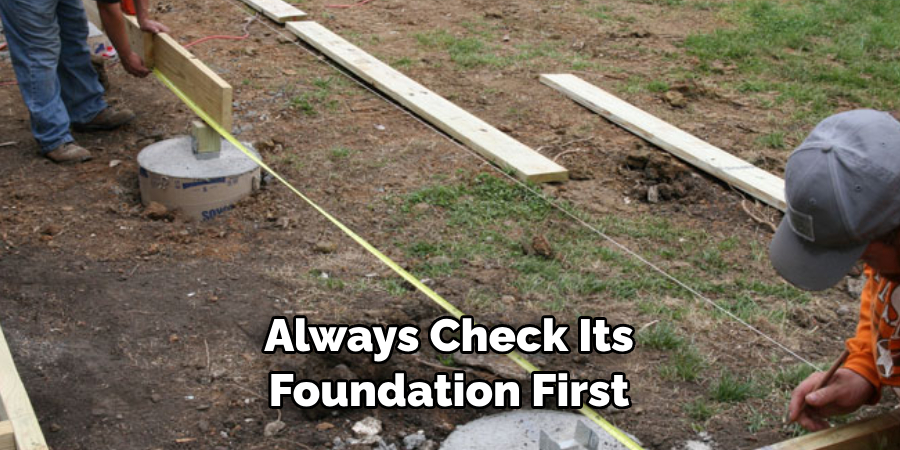
9. Add Support Beams
Depending on how old your house is, there is a chance that some support beams may have rotted away over time, which could cause instability when walking across certain areas of your porch floor – if this is indeed the case, then adding new support beams will help provide additional stability when walking across those areas again!
10. Replace Rotted Wood
If, after checking all these steps above, you find out that there are still sections of rotted wood present on your porch floor, then these should be replaced immediately, as leaving them alone could lead to more serious issues later down the line, such as structural instability, etc… So make sure all rotten sections are replaced promptly in order avoid further damage occurring due such neglect!
Things to Consider When Repairing a Porch Floor
Porch floors are constantly exposed to various outdoor elements such as rain, snow, and direct sunlight. Over time, these elements can cause damage to the porch floor, leading to cracks, rotting wood, and other issues. If you’re planning to repair your porch floor, there are a few important things to consider before getting started.
Identify the Cause of Damage
Before starting any repair work, it’s important to identify the root cause of the damage. This will help you determine the best course of action for repairing your porch floor and prevent future damage. Some common causes of porch floor damage include:
- Water damage from leaks or improper drainage
- Rotting wood due to moisture buildup
- Structural issues such as termite damage or foundation problems
By identifying the cause of damage, you can address the issue directly and ensure that your porch floor is properly repaired.
Choose the Right Materials
When repairing a porch floor, it’s important to use high-quality materials that are designed for outdoor use. This includes choosing the right type of wood, sealant, and fasteners. If you’re unsure about which materials to use, it’s best to consult a professional or do thorough research before making any purchases.
Prepare the Surface
Before starting any repairs, make sure to thoroughly clean the surface of your porch floor. This will help remove any built-up dirt, debris, or old paint that can interfere with the repair process. You may also need to sand down any rough or uneven areas and fill in any cracks with wood filler.
Address Structural Issues
If your porch floor is showing signs of structural damage, such as sagging or uneven boards, it’s important to address these issues before moving forward with repairs. This may involve hiring a professional contractor to fix any foundation problems or replace damaged support beams. Neglecting structural issues can lead to further damage and potentially dangerous conditions.
Consider the Weather
When planning to repair your porch floor, it’s important to consider the weather forecast. Working in extreme temperatures or during periods of heavy rain can affect the quality and durability of your repairs. Aim for mild, dry weather when possible for best results.
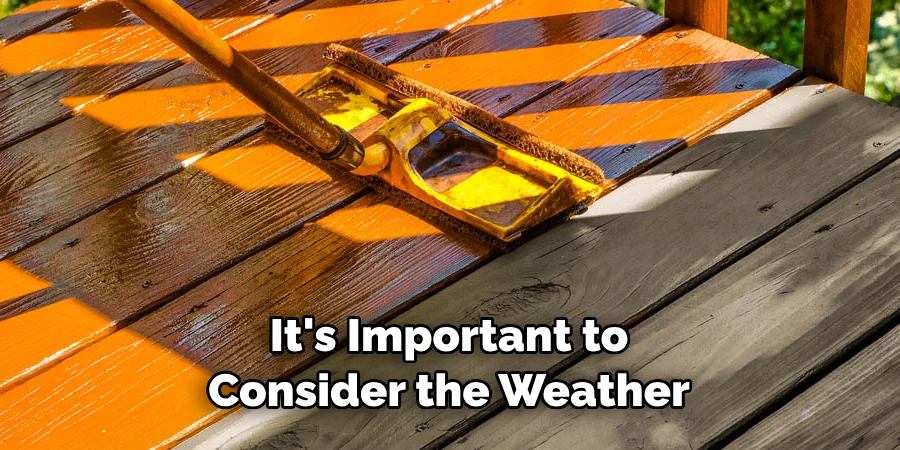
Conclusion
Overall, repairing your porch floor can be a daunting and challenging task. However, with the right tools and resources, it’s easier than you might think. Taking the time to assess the damage, ensuring that your tools are up for the job, and having all of the needed materials on hand will ensure that your project goes smoothly and is successful in the end.
With patience and perseverance you can get your porch back to its prime condition without too much hassle or worry. So don’t put off repairs any longer: if you’re looking to restore your porch flooring, take some time now to gather your materials and learn more about how to repair a porch floor properly!
